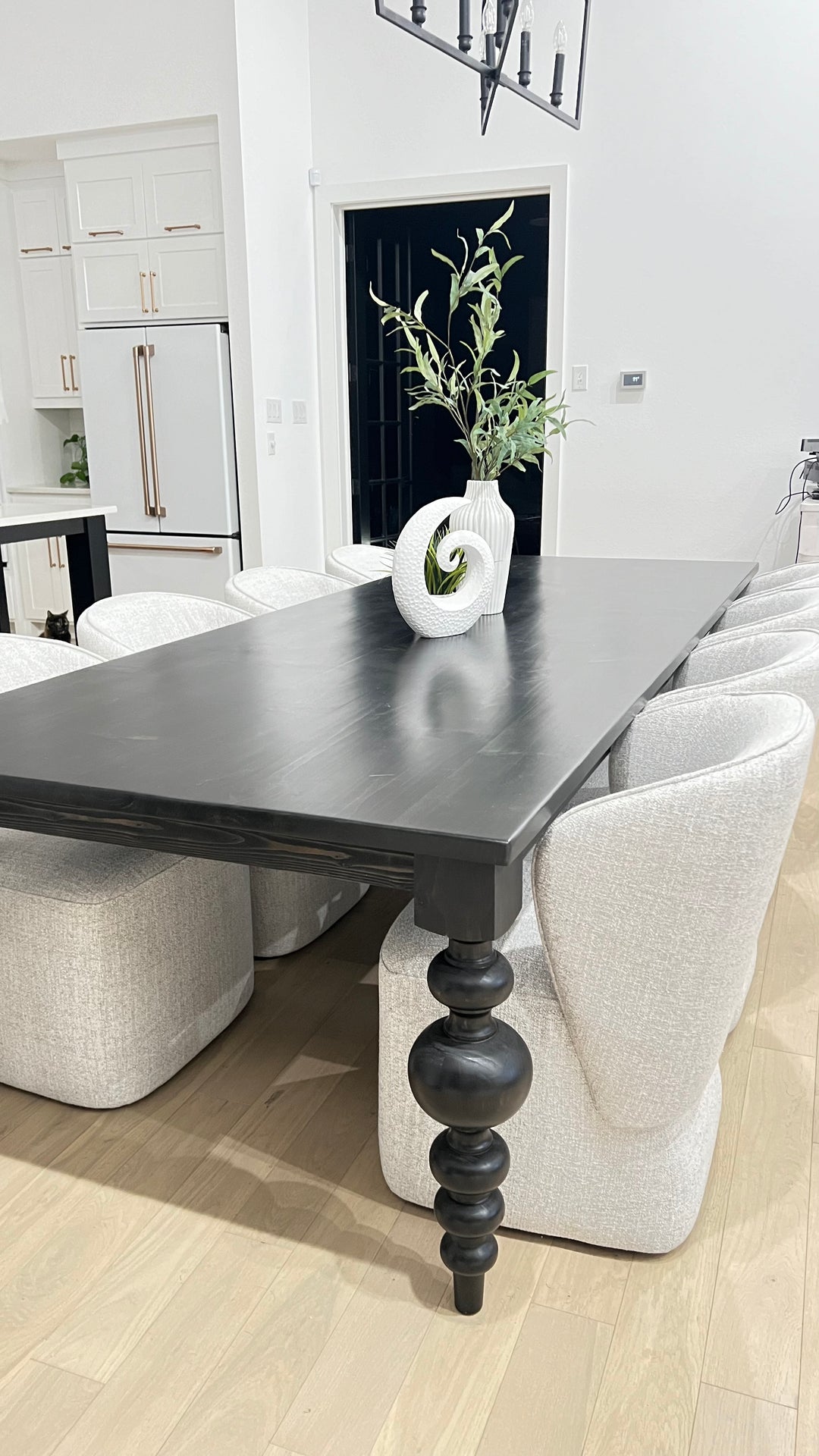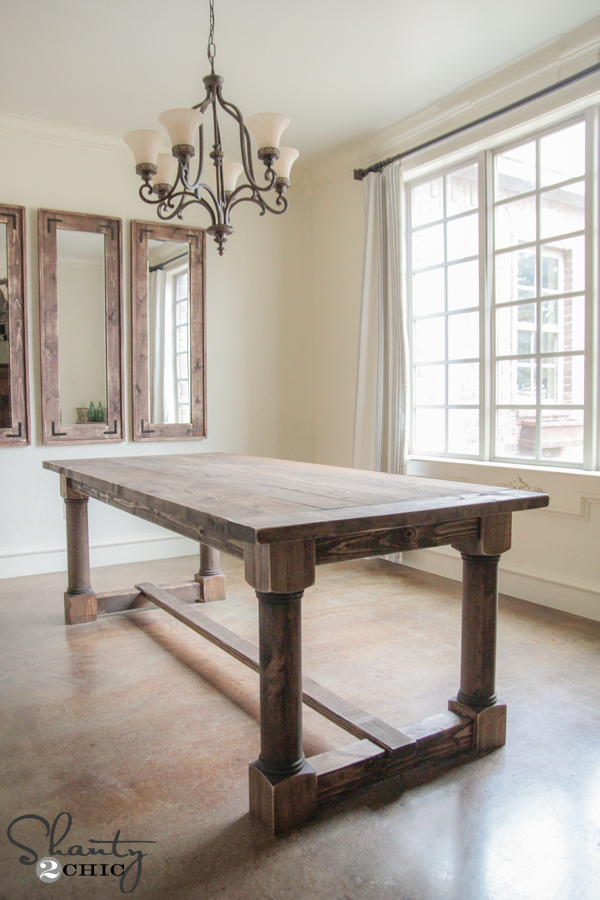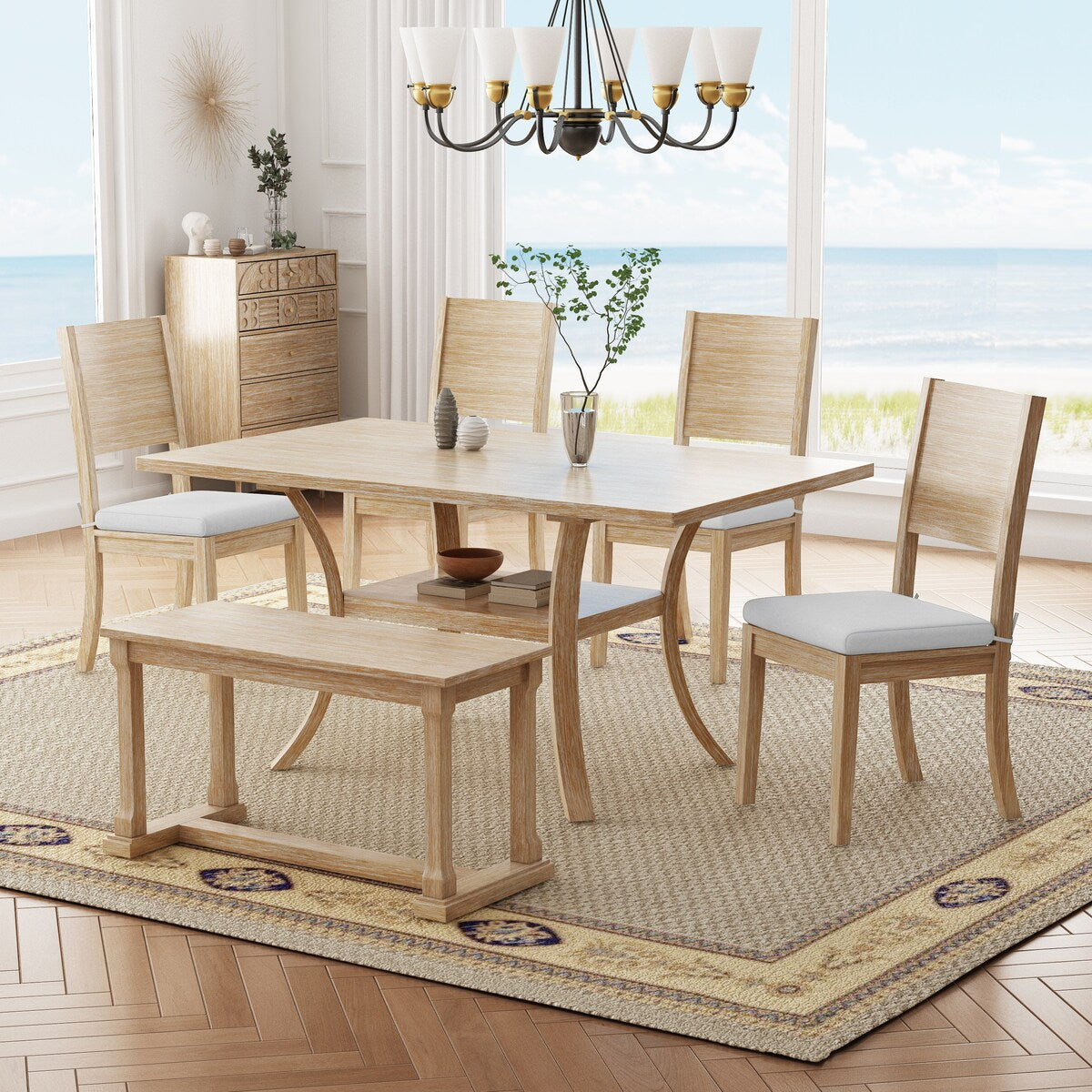Simple Steps to Replacing Old Dining Room Table Legs with New Ones
Simple Steps to Replacing Old Dining Room Table Legs with New Ones
Blog Article
Professional Tips for Installing Dining Room Table Legs for Maximum Stability
When it involves setting up dining space table legs, accomplishing maximum security is extremely important for both capability and aesthetics. The procedure starts with choosing the appropriate products and hardware, followed by careful placement and factor to consider of weight distribution. Each action plays a critical function in guaranteeing that the completed item endures everyday usage without endangering safety and security or design stability. Comprehending the subtleties of these elements can substantially affect the general outcome. What details strategies can enhance security also further?
Pick the Right Legs
When selecting the suitable legs for your eating room table, it is vital to consider both functionality and looks. The legs you pick will substantially influence the overall layout and stability of the table. Review the table's intended use; if you expect frequent celebrations, sturdier legs, such as those made from solid timber or metal, may be a lot more ideal, as they offer enhanced toughness and assistance.
Typical eating tables commonly range from 28 to 30 inches in elevation, so ensure the legs straighten with this criterion for convenience. Tapered legs can include a modern touch, while transformed legs may share a much more classic visual.

Select Appropriate Hardware
How can the best hardware improve the stability and durability of your dining room table? The choice of appropriate hardware is critical to ensuring that the legs of your table are firmly attached and able to endure regular use. High-quality screws, bolts, and brackets supply the required toughness to support the weight of the table, in addition to any type of added loads positioned upon it during gatherings or dishes.
When selecting screws, select those made from sturdy materials such as stainless steel or brass, which withstand deterioration and maintain stability gradually. The size of the screws is equally essential; they must penetrate deeply right into the table's structure without endangering integrity. For bolted links, take into consideration utilizing lock washers to prevent loosening up as a result of vibration or activity.
Additionally, making use of corner braces can add additional support, specifically for bigger tables or those with larger tops. These brackets distribute weight equally and aid preserve the table's shape. Ensuring that the equipment you select is ideal for the certain materials of your table will additionally boost its general security and long life, permitting you to appreciate your eating experience for several years to find.
Ensure Correct Placement
Appropriate alignment of dining-room table legs is crucial for both aesthetic allure and useful stability. Misaligned legs can lead to an unequal tabletop, which might not only be visually unattractive but additionally jeopardize the table's functionality. To accomplish optimal placement, start by gauging the range from the table's corners to the leg attachment factors. This ensures that each leg is positioned equidistant from the sides, developing a find more well balanced appearance.
Make use of a level throughout installation to confirm that each leg is vertical to the table top. This action is essential, as also small inconsistencies can intensify into substantial stability problems in time. It is suggested to mark the wanted leg settings on the bottom of the table with a pencil or concealing tape before safeguarding them. This technique acts as an aesthetic guide, permitting modifications as required.
Moreover, confirm the positioning after the first screws are tightened up, as adjustments might be necessary prior to completely protecting the equipment. By focusing on proper positioning, you not just boost the table's general style but also ensure that it remains useful and steady for several years ahead.

Consider Weight Distribution
After ensuring proper placement of the dining-room table legs, it is essential to think about weight distribution to boost stability and performance. dining room table legs. Correct weight distribution is critical in avoiding ensuring and wobbling that the table can support its intended lots without risk of tipping or breaking down
When positioning the legs, guarantee they are put at equal ranges from the center of the table to evenly disperse the weight across the framework. Think about the weight of the tabletop and any kind of products that will frequently relax on it, such as decorative items or tabletop appliances. Tables with larger surfaces should preferably have legs located closer to the edges, as this makes the most of the base of assistance and reduces the danger of instability.
In addition, if the table is meant for usage in a high-traffic area, consider using much heavier materials for the legs or adding stabilizing aspects, such as cross-bracing or a reduced shelf - dining room table legs. These modifications can assist keep balance and prevent shifting throughout usage. Ultimately, a well-considered weight distribution technique will substantially boost the table's overall performance, ensuring it stays a appealing and functional focal point for your eating room
Test Stability Prior To Usage
Evaluating the stability of the eating space table before usage is an important action that should not be forgotten. Ensuring that the table is protected and steady can protect against crashes and prolong the lifespan of the furniture. Begin by applying mild pressure to different factors on the table surface area. Press down on the facility More Info and after that along the sides, moving or observing any kind of wobbling. If the table shows instability, determine the legs or joints that may call for adjustment.
Next, check that all screws and fasteners are tightened up appropriately. Loosened connections can result in instability and potential damage with time. If necessary, make use of timber glue on joints to boost security, ensuring to permit ample drying out time.

Final Thought
In conclusion, the setup of eating room table legs calls for cautious factor to consider of materials, equipment, placement, and weight circulation to achieve maximum security. By selecting tough legs and top quality bolts, making sure specific alignment, and dispersing weight evenly, the architectural stability of the table can be substantially boosted. Conducting a stability test prior to regular usage better makes certain that the table will endure everyday pressures, thereby giving a reputable and secure eating experience.
When it comes to installing eating area table legs, achieving maximum stability is critical for both functionality and appearances. The legs you choose will considerably affect the general design and security of the table (dining room table legs). Basic dining tables generally range from 28 to 30 inches pop over here in elevation, so make certain the legs straighten with this criterion for convenience.Correct placement of eating area table legs is crucial for both aesthetic appeal and functional stability.In verdict, the installment of eating area table legs calls for careful factor to consider of materials, alignment, weight, and equipment circulation to achieve optimum stability
Report this page